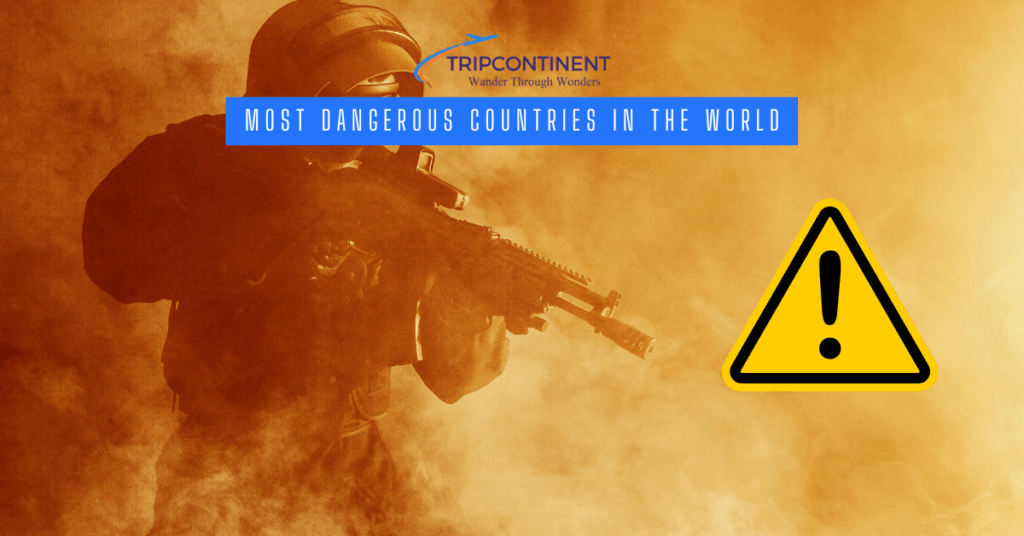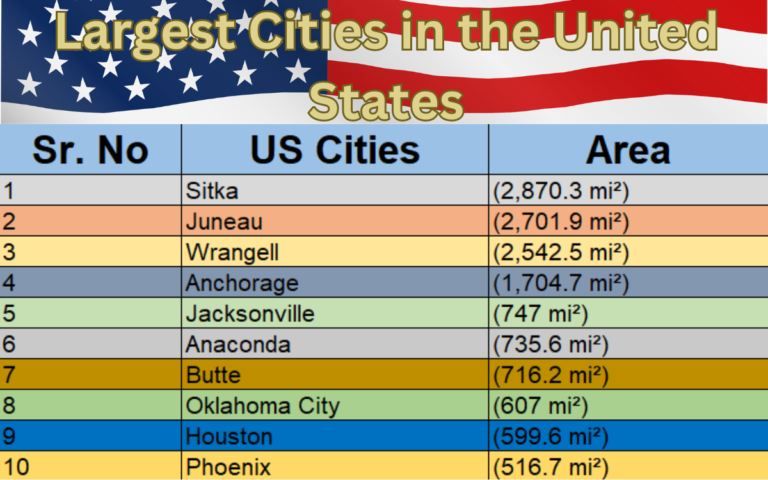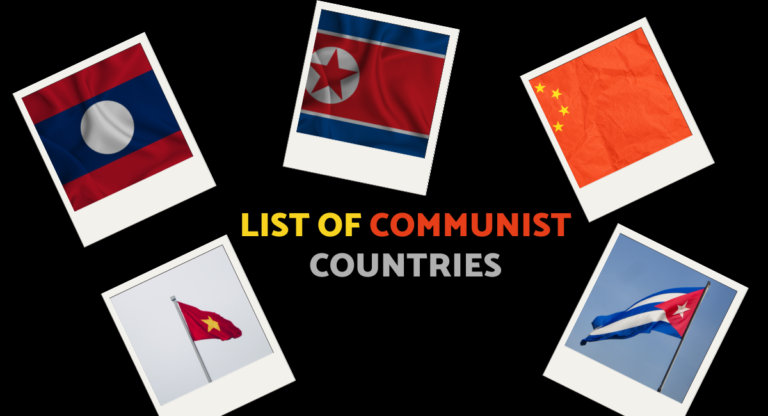Most Dangerous Countries in the World in 2024
Safety is a fundamental concern when choosing where to travel, live, or even invest. With global awareness on the rise, people are increasingly interested in understanding which countries pose the greatest risks. Unfortunately, some nations have become synonymous with danger due to high levels of terrorism, crime, conflict, and instability. These challenges make them hazardous not just for locals but also for visitors.
This article dives into the most dangerous countries in the world, where threats to personal safety are alarmingly high. If you’re curious about which places to approach with caution, keep reading to discover the top 10 most dangerous countries in the world.
A List of the Most Dangerous Countries in the World
- Afghanistan
- Yemen
- Syria
- South Sudan
- DR Congo
- Russia
- Ukraine
- Somalia
- Sudan
- Iraq
1. Afghanistan
Afghanistan remains one of the most dangerous countries in the world, reflected by its 2024 Global Peace Index (GPI) score of 3.448. The country has endured decades of relentless violence, primarily driven by the ongoing conflict between the Taliban, the Afghan government, and various insurgent groups. Despite the Taliban’s return to power in 2021, internal power struggles and resistance from rival factions have continued to fuel instability. In 2024 alone, over 10,000 lives have been lost due to these conflicts, encompassing both combatants and civilians.
The humanitarian crisis in Afghanistan is dreadful, with nearly two-thirds of the population—approximately 28 million people—requiring urgent aid, according to the UN Office for the Coordination of Humanitarian Affairs (OCHA). Widespread food insecurity is a major concern, driven by a collapse in agriculture and economic instability.
Human rights violations are rampant, with severe restrictions on women’s rights, including limited access to education for girls. Additionally, targeted attacks on journalists and activists have stifled free speech, creating an environment of fear and oppression. The combination of ongoing violence, humanitarian suffering, and human rights abuses makes Afghanistan a particularly hazardous place.
Also Read: Most Dangerous Cities in the World
2. Yemen
Yemen, with a 2024 Global Peace Index (GPI) score of 3.350, is one of the most dangerous countries in the world. Since the onset of civil conflict in 2015, Yemen has been engulfed in a severe humanitarian and political crisis. The conflict involves multiple factions, including the internationally recognized government, Houthi rebels, and various extremist and tribal groups. Despite numerous ceasefire attempts and peace negotiations, violence remains rampant. The UN reports over 250,000 deaths related to the conflict in 2024, along with millions displaced from their homes.
The humanitarian situation is dire, with approximately 80% of Yemen’s population—over 24 million people—requiring urgent assistance, according to the World Food Programme (WFP). The crisis has led to widespread food insecurity, with over 2 million children under five suffering from acute malnutrition. Infrastructure destruction has severely hindered access to essentials like clean water, sanitation, and medical care.
The economy is disordered due to the collapse of local markets and the blockade of key ports, causing massive unemployment and inflation. Educational opportunities are also severely impacted, with many schools destroyed or repurposed as shelters. Human rights abuses are widespread, with all sides of the conflict targeting civilians and curtailing freedoms. The urgent need for a lasting peace settlement is crucial to prevent further collapse.
3. Syria
Syria, with a 2024 Global Peace Index (GPI) score of 3.294, remains one of the most dangerous countries globally. Since the civil war erupted in 2011, the nation has been engulfed in relentless conflict involving the Syrian government, opposition forces, ISIS, Kurdish factions, and various international actors. This ongoing violence has resulted in an estimated 500,000 deaths and has displaced millions both internally and externally.
The humanitarian situation in Syria is catastrophic. Over 13 million people, including 6.6 million internally displaced individuals, are in urgent need of assistance, according to the UN. Food insecurity affects more than half of the population, while the healthcare system is severely compromised, with many hospitals either destroyed or barely operational.
The economy is in ruins, with the Syrian pound plummeting and unemployment soaring. Resource shortages and rising prices have plunged many Syrians into poverty. Human rights abuses are widespread, including extrajudicial executions, arbitrary detentions, and widespread torture. The conflict has also devastated educational infrastructure, leaving millions of children unable to attend school. Immediate international intervention is crucial for peace and reconstruction in Syria.
4. South Sudan
South Sudan, with a 2024 Global Peace Index (GPI) score of 3.221, remains one of the most dangerous countries. Since gaining independence in 2011, the nation has been plagued by civil conflict, ethnic violence, and political instability. The primary conflict involves the government and opposition forces, but violence also frequently erupts among various ethnic groups. According to UN estimates, nearly 400,000 people have died as a result of the fighting, and millions have been displaced. As of 2024, about 1.6 million South Sudanese are internally displaced, while 2.2 million are refugees in neighboring countries.
According to the UN Office for the Coordination of Humanitarian Affairs (OCHA), over 7.5 million people, or more than half of the population, require urgent humanitarian aid. Severe hunger affects almost 60% of the population, and it is exacerbated by violence, displacement, and economic collapse.
The healthcare system is in chaos, with limited access and frequent disease outbreaks like malaria and cholera. Education has also suffered, with many schools destroyed or closed, leaving millions of children out of school. Human rights abuses, including sexual assault, arbitrary detentions, and attacks on civilians, are widespread, further compounding the suffering of the South Sudanese people.
5. DR Congo
With a 2024 Global Peace Index (GPI) score of 3.214, the Democratic Republic of the Congo (DRC) remains one of the most dangerous countries globally. The DRC, particularly its eastern regions, is plagued by ongoing conflict, political instability, and severe humanitarian issues. Armed groups like the Allied Democratic Forces (ADF) and various militias frequently target civilians, perpetuating violence. In 2024, over 5,000 people have died due to the conflict, and millions more have been displaced, contributing to one of the largest humanitarian crises in history.
The humanitarian condition is distressing, with approximately 27 million people—nearly a third of the population—needing urgent aid. Food insecurity affects over 26 million people, worsened by conflict and disruption of agricultural activities. The healthcare system is overwhelmed, struggling to manage frequent outbreaks of diseases such as cholera, measles, and Ebola.
Economically, the DRC is in shambles. Despite its wealth of natural resources, corruption and exploitation hinder economic growth, resulting in widespread poverty and high unemployment. Human rights abuses are prevalent, including child soldier recruitment, forced labor, and sexual violence, as documented by Human Rights Watch. The DRC’s complex challenges in 2024 highlight the urgent need for robust international support for development, humanitarian relief, and peacebuilding efforts.
Also Explore: Safest Countries in the World
6. Russia
Russia, with a 2024 Global Peace Index (GPI) score of 3.142, is facing significant challenges that make it one of the most dangerous nations globally. The ongoing conflict in Ukraine has intensified geopolitical tensions, contributing to widespread instability and security concerns. The war has led to substantial casualties, with international sources estimating over 100,000 deaths and millions displaced by 2024.
Western sanctions have severely impacted Russia’s economy, driving the country into recession and causing a sharp rise in poverty. The Russian ruble’s devaluation and soaring inflation have exacerbated financial hardships for ordinary citizens.
The human rights situation in Russia has deteriorated markedly. Freedom of the press and speech are heavily restricted, with numerous reports of political dissidents and journalists facing imprisonment, harassment, or worse. Amnesty International highlights severe crackdowns on opposition groups and protesters, significantly curtailing political freedoms.
Russia also struggles with internal issues such as organized crime and widespread corruption, which undermine law and order. Environmental concerns are escalating, with industrial accidents and pollution posing severe health risks. The complexities of Russia’s domestic and international challenges in 2024 underscore the urgent need for diplomatic efforts to ease hostilities and improve human rights and economic stability.
7. Ukraine
Ukraine remains one of the most dangerous countries in the world, with a 2024 Global Peace Index (GPI) score of 3.043, largely due to the ongoing conflict with Russia. Since the escalation of hostilities in 2022, the country has faced severe casualties, widespread displacement, and massive infrastructure damage.
As of 2024, over 150,000 individuals, including both soldiers and civilians, have lost their lives due to the conflict. The war has displaced more than 15 million people, with over 8 million seeking refuge in neighboring countries and an additional 7 million displaced within Ukraine itself. Cities across the nation are either destroyed or heavily damaged, impacting essential infrastructure such as homes, schools, and hospitals.
The humanitarian situation in Ukraine is awful, with the UN estimating that over 18 million people require urgent aid. The disruption of agriculture and supply chains has led to widespread food insecurity. The healthcare system is overwhelmed, struggling to provide adequate care amidst ongoing attacks and shortages of medical supplies.
The economy is in severe decline, with industries crippled, unemployment soaring, and the national currency plummeting. The World Bank reports a GDP contraction of more than 30%, deepening poverty across the country.
Human rights abuses are out of hand, including enforced disappearances, random attacks on civilians, and torture. Amnesty International highlights the severe conditions faced by POWs and the persecution of activists and journalists. The situation in Ukraine in 2024 underscores the urgent need for international intervention to restore peace, provide humanitarian assistance, and support reconstruction efforts.
8. Somalia
Somalia remains one of the most dangerous countries in the world, with a 2024 Global Peace Index (GPI) score of 3.036, largely due to ongoing violence, terrorism, and political instability. Since the collapse of the central government in 1991, the nation has been plagued by civil war and chaos.
The primary source of instability in Somalia is Al-Shabaab, a militant group that continues to carry out frequent and brutal attacks. In 2024 alone, Al-Shabaab has been responsible for numerous bombings and assaults, resulting in over 5,000 deaths and causing widespread injuries and displacement.
The UN Office for the Coordination of Humanitarian Affairs (OCHA) estimates that around 7.7 million people are in need of aid, with nearly 3 million internally displaced. Food insecurity affects more than half the population, exacerbated by ongoing conflicts and severe droughts that disrupt agriculture. The healthcare system is severely under-resourced, struggling to manage disease outbreaks and a lack of medical supplies.
The economy is in shambles, characterized by high poverty and unemployment rates. While remittances from the Somali diaspora and informal sectors provide some economic support, persistent insecurity hampers international investment and development, leaving the country in a state of prolonged economic hardship.
9. Sudan
Sudan, with a 2024 Global Peace Index (GPI) score of 3.023, remains one of the most hazardous countries in the world due to severe political instability, conflict, and humanitarian crises. Despite the removal of dictator Omar al-Bashir in 2019, Sudan continues to grapple with deep-rooted issues.
The country’s instability is driven by ongoing conflicts in Darfur, South Kordofan, and Blue Nile, where violent clashes have resulted in over 3,000 deaths and displaced nearly 2 million people in 2024 alone. The violence perpetrated by government forces, opposition groups, and militias frequently targets civilians, exacerbating the humanitarian disaster.
Humanitarian conditions in Sudan are terrible. The UN Office for the Coordination of Humanitarian Affairs (OCHA) reports that about 14 million people are in need of aid. Food insecurity affects one-third of the population and is worsened by ongoing conflict, economic instability, and climate-related shocks. The healthcare system is severely strained, struggling with inadequate staffing and medical supplies.
Economically, Sudan is in severe decline, marked by high unemployment, inflation, and a plummeting Sudanese pound, which has drastically diminished purchasing power. Corruption and poor management further hinder economic recovery and progress.
10. Iraq
Iraq remains deeply troubled, with a Global Peace Index (GPI) score of 3.006 in 2024, reflecting ongoing security and humanitarian crises. The country’s turmoil traces back to decades of conflict, including the 2003 U.S. invasion, the rise and fall of ISIS, and persistent sectarian violence.
Despite losing its territorial control, ISIS continues to pose a threat in 2024, conducting bombings and insurgent attacks primarily in northern and western Iraq. The presence of various militias and security forces has led to frequent clashes, with the UN reporting over 5,000 conflict-related deaths this year.
The humanitarian situation in Iraq is dire. According to the UN Office for the Coordination of Humanitarian Affairs (OCHA), more than 4 million Iraqis require aid. There are approximately 1.2 million internally displaced persons (IDPs), many of whom live in impoverished conditions within camps or informal settlements. Food insecurity is widespread, worsened by political instability and a troubled economy.
Iraq’s economy is heavily reliant on oil, and it struggles with volatile oil prices, pervasive corruption, and inadequate infrastructure. High unemployment, especially among the youth, further fuels social unrest and hampers efforts to rebuild and diversify the economy.
Must Read: Most Dangerous Cities in the US
A Table Indicating the Most Dangerous Countries in the World
| No. | Country | GPI Index |
| 1 | Afghanistan | 3.448 |
| 2 | Yemen | 3.350 |
| 3 | Syria | 3.294 |
| 4 | South Sudan | 3.221 |
| 5 | Dr. Congo | 3.214 |
| 6 | Russia | 3.142 |
| 7 | Ukraine | 3.043 |
| 8 | Somalia | 3.036 |
| 9 | Sudan | 3.023 |
| 10 | Iraq | 3.006 |
Conclusion
The ongoing conflicts and crises in the most dangerous countries in the world underscore a pressing need for international intervention and support. As the world struggles with these complex and multifaceted challenges, addressing the root causes of instability—such as political corruption, armed conflict, and humanitarian neglect—is crucial for fostering long-term peace and stability. The international community must remain vigilant and proactive in providing humanitarian aid, supporting peacebuilding efforts, and advocating for human rights to mitigate the suffering of affected populations and work towards a more secure and equitable global future.
FAQs
Which Country Is the Safest in 2024?
In 2024, Iceland is recognized as the safest country globally, boasting a Global Peace Index score of 1.124.
Which City Has the Highest Crime Rate?
In 2024, Tijuana, Mexico, is known as the city with the highest crime rate. The city faces significant challenges related to violence and criminal activity.
Which Continent Is Known as the Safest?
Europe is recognized as the safest continent in the world. According to the Global Peace Index, Europe’s top 10 safest countries have remained largely consistent over the past 17 years, showcasing their stability and security. Despite conflicts in some nearby regions, Europe continues to dominate the list of the safest nations globally.
What Is the Most Unsafe Country to Visit?
Afghanistan and Yemen currently rank as the most dangerous countries to visit. Both nations face severe threats to safety due to ongoing conflict, violence, and instability. However, it’s important to note that not every area within these countries is equally hazardous. Some regions may have lower crime rates and offer relative safety, but overall, travel to these countries is highly risky and generally advised against.

I’m Sophia Jones, an adventurer at heart from New York City, USA. I live for travel and exploration, always eager to discover new places, meet fascinating people, and try out diverse cuisines. Over the past few years, I’ve traveled to numerous countries, immersing myself in different cultures and creating unforgettable memories.






